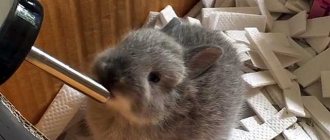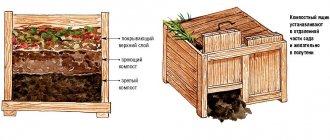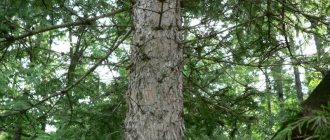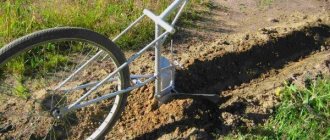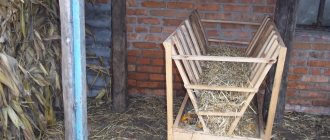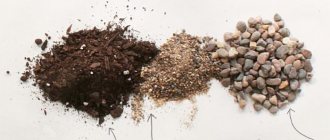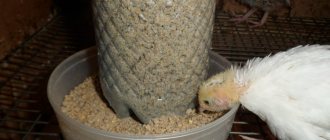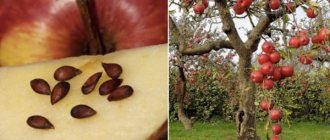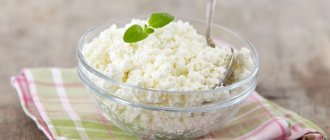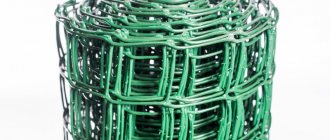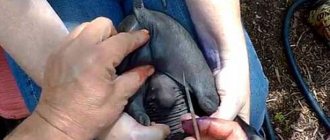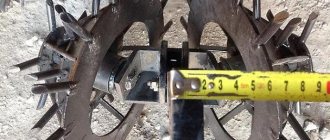Rabbits are known for their fertility - females sometimes give birth more than six times a year. It is important to create good conditions for them. Then the mother and cubs remain healthy, and the population grows. A special compartment in the cage is built for the expectant mother and offspring. Since the design is simple, most often all the work, starting with the drawings of the queen cell for rabbits, is done with your own hands.
Why do you need a queen cell?
Under natural conditions, pregnant female rabbits prepare places for their young rabbits in advance. Usually, the female creates a shelter in the minks, creating a warm and safe environment for newborn babies. By raising rabbits on farms, owners artificially create conditions in which female rabbits safely give birth and raise babies. If you do not take care of creating a corner in advance, then the animal will become very nervous in an open cage, and there is a risk of complications.
It is advisable to install a small closed container with a narrow opening in the cage. A special structure can be attached to the front of the cage so that the female can safely move from the queen cell into a free cage.
Types and designs
When arranging a queen cell, it is necessary to take into account several factors: the area of the room, the seasonality of breeding rabbits, the size of the cages, the number of animals. The rabbitry is equipped with two types of queen cells:
- removable ones are convenient to use with a large number of females, in compact rooms;
- stationary ones are installed in large rooms if there are few females.
Advantages of a removable birthing box: easy to disinfect, simple installation, ability to attach to the cage where the baby is expected, space in the room is saved. The advantages of stationary uterine structures are that you do not need to waste time attaching the uterine structure.
Dimensions and drawings of queen cell for rabbits
Average cage dimensions: 50 cm length, 30 cm width and height. It is recommended to make the entrance hole with a diameter of approximately 15 cm. In order for the female and her babies to be comfortable in the queen cell, the breed of rabbits must be taken into account. For large breeds (white giant, gray giant), queen cells are collected with dimensions of 80x50x95 cm (HxWxL) with a hole diameter of 18 cm. For medium-sized animals, structures with dimensions of 60x50x70 cm are suitable, holes are made with diameters of 15-18 cm. Females of decorative breeds will be comfortable in buildings with dimensions of 25x25x40 cm, hole with a diameter of 10 cm.
See also
How you can train a rabbit to use a litter tray at home and what not to doRead
Expert opinion
Zarechny Maxim Valerievich
Agronomist with 12 years of experience. Our best country expert.
Ask a Question
Advice! If the room has a non-standard geometry or different breeds of rabbits are raised, it is easier to assemble structures according to individual drawings.
We make a maternity ward ourselves
It is quite simple to build a queen cell ; for this you just need to take into account some conditions for keeping the animals. The rabbitry must have additional insulation, which will allow it to store heat for a long time, even in cold weather.
To create a house you need to select materials and prepare tools.
Required Tools
In order to make a queen cell for rabbits with your own hands, you first need to prepare the following materials for work:
- hammer;
- saw;
- screwdriver;
- nails;
- pen (pencil);
- self-tapping screws
In addition, you should stock up on the necessary materials.
DIY making
If you assembled the cages for the rabbits yourself, then it would be advisable to make the queen cells yourself. In order not to harm the health of rabbits, it is recommended to use environmentally friendly materials for assembling structures.
Required material
A budget set of materials: plywood 5-10 mm thick, wooden slats 2-2.5 cm wide. When constructing a cage, you need to think about a method of thermal insulation. Rabbits are raised in different regions, but in cold regions it is important to provide warmth for the female and female rabbits. The simplest solution is to line the cage walls with sheets of foam plastic 2-3 cm thick.
A more environmentally friendly solution is to make two-layer plywood walls and fill the space between the panels with sawdust.
Required Tool
To assemble the cage you will need the usual tools: jigsaw, hacksaw, screws, sandpaper. To make it easier to clean the structure, it makes sense to make a hinged lid. Therefore, hinged hinges will also be needed.
Manufacturing process
To speed up the assembly process, it is recommended to assemble the blanks in advance. To do this, sheets are cut out of plywood for the walls, ceiling and floor (two pieces each). The end surfaces are cleaned with sandpaper. Rectangles of the required parameters are cut out of polystyrene foam (for walls, floor, ceiling). If you plan to put sawdust between the plywood walls, they must first be dried in the sun for 2-3 days. Nest assembly steps:
- Sandwich panels are assembled from plywood rectangles: slats are attached to the sheets along the perimeter, foam is placed inside or sawdust is filled.
- A hole of the required diameter is cut out on one wall, and the cut line is sanded.
- Sandwich panels are connected into a box, fixed with self-tapping screws.
- The ceiling is attached to the box using hanging hinges.
It is recommended to build a queen cell 5-6 days before birth. Before placing the structure in the cage, you need to prepare it. The walls are wiped with a damp cloth and, after drying, disinfected with a solution of potassium permanganate. Hay is placed inside, but usually the female rabbits themselves “regulate” the amount of hay and straw.
See also
Description and character of colored dwarf rabbits, contentRead
Some tips for organizing a nest
Experienced farmers take into account the characteristics of materials and aspects of the behavior of eared pets during construction:
- The wires of the devices are carefully covered and masked. Otherwise they will be chewed off. This is a serious threat to the health and life of pets.
- Sometimes there is no need for heating, for example in the summer. The devices are removed, otherwise the rabbits will be pampered and in poor health.
- It is better to choose slats from deciduous trees. Conifers emit a smell that repels the female rabbit.
- A hole made at a height of 10–15 cm from the floor is the best option. This way, the rabbits do not run away, but can explore the world through the hole.
- The floor is sometimes made at a slight slope. This makes cleaning easier.
- It is advisable not to use glass wool for insulation. As a rule, it enters the mother liquor through tiny cracks. Glass wool is harmful to rabbits. It gets on the surface of the body, in the eyes, ears, mouth.
- Sometimes straw is used to insulate walls, ceilings, and floors. They put it inside the “sandwich”. It's better not to do this. Straw rots quickly. As a result, heat is lost and the number of microbes increases. In order for the straw to last longer, it must be dried and treated with anti-pest drugs. Products should not be toxic or poisonous.
- To insulate the structure, the walls are sometimes sheathed with foam plastic. Perhaps this is the best replacement for pressed sawdust. Even if you stuff pieces between sheets of plywood, the foam retains heat perfectly. The material is safe and inexpensive.
- Female rabbits also insulate the queen cell. They pinch the fluff from their belly and chest and prepare the “bed.” This usually happens a few days before the birth of the offspring. Although sometimes the female rabbit does not make a nest before giving birth. This occurs due to underfeeding, stress or inexperience. When the mother is not ready to give birth, you need to monitor her. Often such females push away or even eat rabbits.
The queen cell is a simple but important structure. When manufacturing, we must not forget about the characteristics of the breed. The size and profitability of the farm depends on the health of the offspring.
Heating options
In addition to thermal insulation of the walls, it is advisable to install heated floors of the cages. Most often, two options for floor insulation are used in enclosed spaces. A concrete floor screed is made in the room, into which the electrical cable is placed. This solution has several advantages: concrete protects the cable from moisture, and at the same time it is possible to organize heating of the drinkers so that the water does not freeze into ice. The disadvantage is the cost of concrete (especially for spacious rooms).
A more budget-friendly option is film infrared floor covering. The advantages of the material are an affordable price; it is possible to organize insulation of the floor of individual cells. The downside is the need to cover the film covering (use a plank floor or flat slate).
Important Tips
It is not advisable to use fresh pine sawdust for thermal insulation of a structure. Because a strong, pungent odor can unnerve the rabbit. It is also important to thoroughly sand the inside surfaces of the cage to prevent the animals from getting hurt. When the rabbits are three weeks old, they need to be taught to relieve themselves outside the queen cell.
On farms and in apartments, rabbits are kept in cages. To ensure that breeding animals does not cause problems, it is necessary to create appropriate conditions for females and babies. The female rabbits will feel safe, and the babies will grow calmly in the queen burrows installed in the cages.
Group for young animals.
The concept of “young animals” includes animals that their mother has already stopped feeding with milk, but which have not yet reached reproductive age. In the case of rabbits, cessation of lactation occurs in 70% of cases in the period from 30 to 45 days after birth.
At this time, jigging is carried out. Individuals are divided into those for slaughter and those intended for breeding. The latter are also differentiated by gender. The container for young animals should be located at some distance from the ground when kept outdoors, and be free and clean. If a utility room is used for maintenance, it should be well ventilated and bright.
Animals to be slaughtered are placed in groups of 6-8 individuals (read more about slaughter). Some breeders increase the number of animals to 10-15. The area of the enclosure must be at least 0.12 m² per animal. Breeding young animals are kept in 4-8 individuals with an area of 0.17 m² per individual. Sometimes females and males are kept together until 3 months of age, but it is better to separate them in advance to avoid premature mating.
Video - three-tier cage for rabbits:
The design can be one-sided (when one plane is a mesh) or two-sided (in which case two opposite planes are open). It is necessary to choose one of them based on environmental conditions.
If animals are kept outdoors or breeding takes place in windy areas, it is better to use the first option. In a poorly ventilated room - second. This is of particular importance for unvaccinated young animals (more about vaccinations), the animals’ immunity has not yet been formed and they are more susceptible to various diseases.
In such variants a pitched roof is used. This creates a certain height difference, which allows pets to feel comfortable. It is made of dense waterproof material. The optimal height difference will be from 60 cm to 30 cm. The depth for a group of 6-8 individuals can be up to 80 cm.
